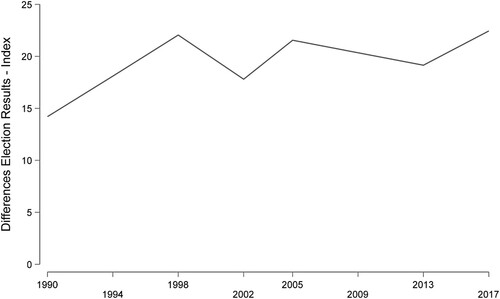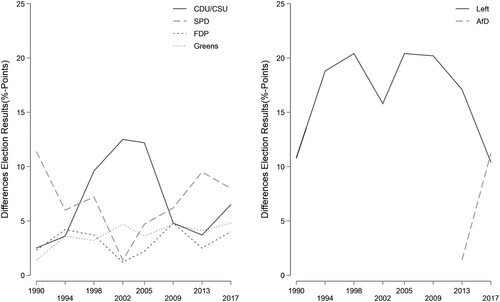Figures & data
Table 1. Hypotheses
Figure 1. Volatility in Eastern and Western Germany, 1994–2017. Data Source: Bundeswahlleiter (Citation2018).
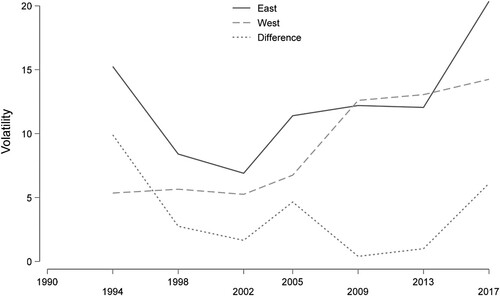
Figure 2. Vote-switching in Eastern and Western Germany, 1994–2017. Data Source: Schmitt et al. (Citation1997, Citation2015; Citation2020); Van der Eijk et al. (Citation1999); Van Egmond et al. (Citation2013).
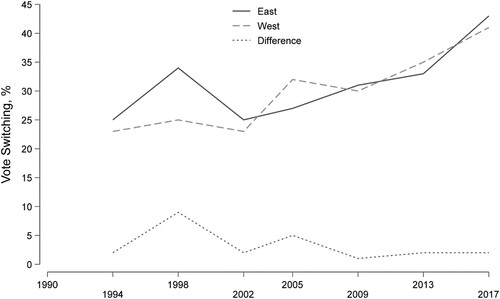
Figure 3. Electoral Availability in Eastern and Western Germany, 1994–2019. Data Source: Schmitt et al. (Citation1997, Citation2015; Citation2020); Van der Eijk et al. (Citation1999); Van Egmond et al. (Citation2013).
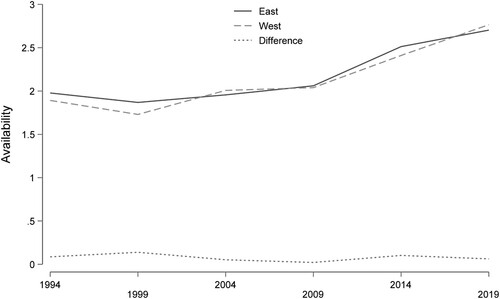
Figure 4. Effective Number of Electoral Parties in Eastern and Western Germany, 1994–2019. Data Source: Bundeswahlleiter Citation2018.

Figure 5. Difference Index of Vote Shares between Eastern and Western Germany, 1994–2019. Data Source: Bundeswahlleiter (Citation2018).
